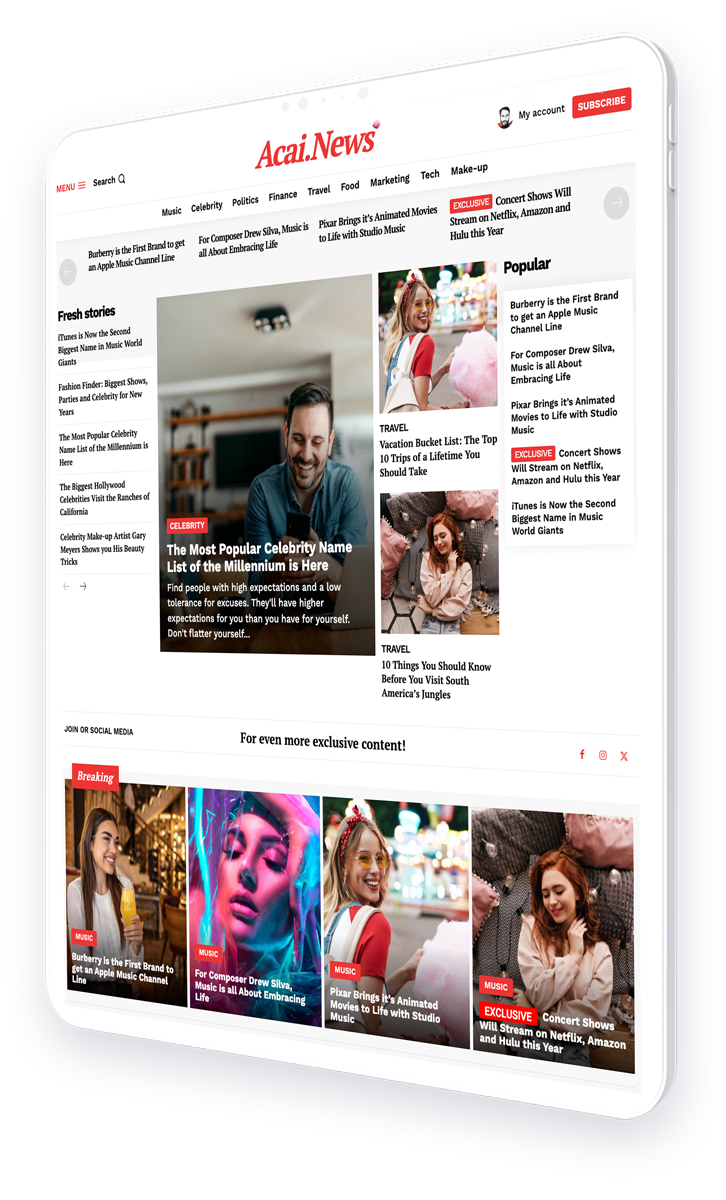Techniques for tailoring magazine content to individual user preferences
In the digital age, the way we consume content has drastically changed. With the advent of artificial intelligence (AI), personalization has become a key strategy for engaging audiences. AI-driven personalization allows content creators to tailor their offerings to meet the unique preferences of each reader, creating a more engaging and relevant experience. This article explores the techniques and strategies for creating a magazine that speaks directly to the reader through AI-driven personalization.
Understanding AI-Driven Personalization
AI-driven personalization involves using algorithms and data analytics to customize content for individual users. This approach leverages machine learning and data mining to understand user behavior, preferences, and interests. By analyzing this data, AI can predict what content a user is likely to engage with and tailor the magazine accordingly.
The Role of Data in Personalization
Data is the backbone of AI-driven personalization. By collecting and analyzing data from various sources, such as browsing history, social media interactions, and past content consumption, AI can create a detailed profile of each reader. This profile is then used to deliver personalized content that aligns with the reader’s interests.
Browsing History: Tracks the pages and articles a user visits.
Social Media Interactions: Analyzes likes, shares, and comments to gauge interests.
Content Consumption: Monitors the type of content a user engages with most frequently.
Machine Learning Algorithms
Machine learning algorithms play a crucial role in AI-driven personalization. These algorithms can identify patterns and trends in user data, allowing for more accurate predictions of user preferences. Some common algorithms used in personalization include:
Collaborative Filtering: Recommends content based on the preferences of similar users.
Content-Based Filtering: Suggests content similar to what the user has previously enjoyed.
Hybrid Models: Combine multiple algorithms to improve recommendation accuracy.
Techniques for Tailoring Magazine Content
Creating a personalized magazine involves several techniques that leverage AI and data analytics. These techniques ensure that each reader receives content that is relevant and engaging.
Dynamic Content Generation
Dynamic content generation involves creating content that adapts to the reader’s preferences in real-time. This can be achieved through:
Personalized News Feeds: Curate articles and news stories based on the reader’s interests.
Adaptive Layouts: Adjust the magazine’s layout to highlight content that aligns with the reader’s preferences.
Interactive Elements: Incorporate quizzes and polls that adapt based on user responses.
Behavioral Targeting
Behavioral targeting uses data on user behavior to deliver personalized content. By understanding how users interact with content, magazines can tailor their offerings to better meet reader needs.
Segmentation: Divide readers into segments based on behavior and preferences.
Predictive Analytics: Use historical data to predict future behavior and tailor content accordingly.
A/B Testing: Experiment with different content variations to determine what resonates best with readers.
Case Studies in AI-Driven Personalization
Several magazines have successfully implemented AI-driven personalization to enhance reader engagement. These case studies highlight the effectiveness of personalization strategies.
Case Study: The New York Times
The New York Times has embraced AI-driven personalization to deliver tailored content to its readers. By analyzing user data, the publication can recommend articles and topics that align with individual interests. This approach has led to increased reader engagement and subscription rates.
Case Study: Condé Nast
Condé Nast, a leading media company, uses AI to personalize content across its portfolio of magazines. By leveraging machine learning algorithms, Condé Nast can deliver targeted content that resonates with readers, resulting in higher engagement and retention rates.
The Benefits of AI-Driven Personalization
Implementing AI-driven personalization offers several benefits for both publishers and readers. These advantages include:
Increased Engagement: Personalized content is more likely to capture the reader’s attention and encourage interaction.
Higher Retention Rates: Readers are more likely to return to a magazine that consistently delivers relevant content.
Improved User Experience: Personalization creates a seamless and enjoyable reading experience.
Challenges and Considerations
While AI-driven personalization offers numerous benefits, it also presents challenges that publishers must address. These challenges include:
Data Privacy Concerns
Collecting and analyzing user data raises privacy concerns. Publishers must ensure that they comply with data protection regulations and maintain transparency with readers about how their data is used.
Algorithm Bias
AI algorithms can inadvertently introduce bias into content recommendations. Publishers must regularly audit their algorithms to ensure fairness and accuracy in personalization.
Technical Complexity
Implementing AI-driven personalization requires technical expertise and resources. Publishers must invest in the necessary infrastructure and talent to effectively leverage AI technologies.
Conclusion: The Future of Personalized Magazines
AI-driven personalization is revolutionizing the way magazines engage with readers. By leveraging data and machine learning, publishers can create a magazine that speaks directly to each reader’s interests and preferences. The future of personalized magazines lies in the ability to deliver content that is not only relevant but also engaging and enjoyable. As technology continues to evolve, the possibilities for personalization are endless, offering exciting opportunities for both publishers and readers alike.
For more insights on AI-driven personalization, visit Forbes.




